Meiosis Mistakes
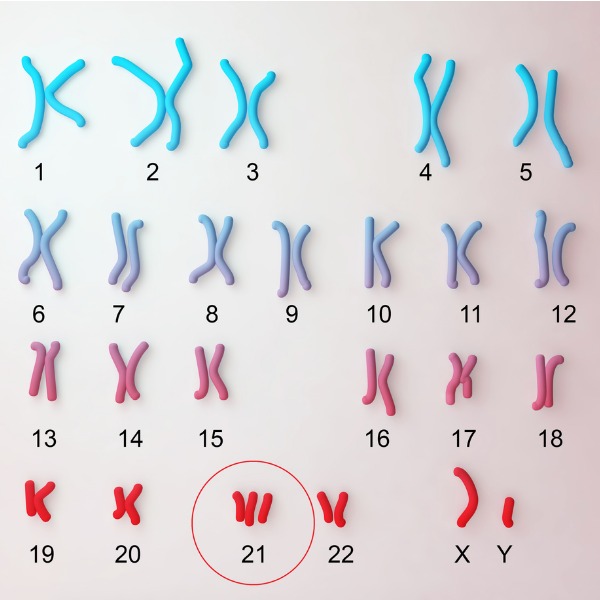
Down Syndrome karyotype (Dr_Microbe, iStockphoto)

Down Syndrome karyotype (Dr_Microbe, iStockphoto)
How does this align with my curriculum?
| Grade | Course | Topic |
|---|
Errors during meiosis can alter the number of chromosomes in cells and lead to genetic disorders.
People are always pointing out differences between cultures, ethnicities and nationalities. But we all belong to the same species. DNA evidence shows that all humans are more than 99% genetically identical. The remaining 1% percent variance in genetic makeup is due in part to mutations that occur occasionally during cell division. Let’s take a closer look at how this happens.
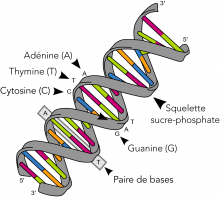
What is DNA?
DNA is short for deoxyribonucleic acid. You’ve probably heard that it’s what makes you unique. DNA is a long chain of molecules that looks like a twisted ladder. The rails are made of sugar and phosphate molecules. These are also called the “backbone” of a DNA molecule.
Each rung is a combination of four different nucleotide bases. They are adenine, guanine, cytosine and thymine. A different letter stands for each nucleotide. A stands for adenine, G for guanine, C for cytosine and T for thymine.
Strands of DNA contain genes and chromosomes. Genes are like genetic paragraphs written using nucleotides. And chromosomes are like genetic books that contain large number of genes.
The human body has 23 different chromosomes. Each cell has two copies of each chromosome, one from your mother and the other from your father. This makes for a grand total of 46 chromosomes. Almost every single cell in your body contains the exact same chromosomes.
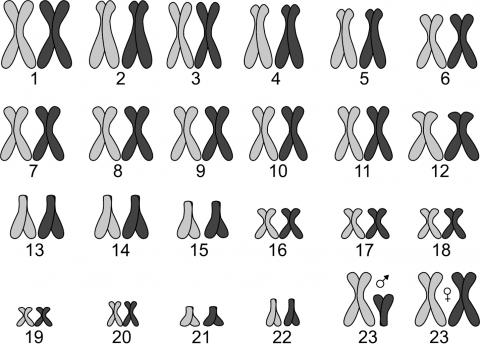
Did you know?
All living things have a set number of chromosomes. Fruit flies have four chromosomes. Dogs have 78!
The human body has 22 pairs of non-sex chromosomes, called autosomes. That leaves just one pair of sex chromosomes. These determine your biological sex. If you are biologically female, you have two X chromosomes. If you are biologically male, you have one X chromosome and one Y chromosome.
What happens to chromosomes during reproduction?
Reproduction depends on specialized sex cells, called gametes. These cells only contain 23 chromosomes, or half the genetic material of other cells. Gametes are commonly known as sperm cells in males, and egg cells in females.
During reproduction, the 23 chromosomes from the egg cell and those from the sperm cell combine to make a full set of 46 chromosomes. This is called a zygote. This zygote can then develop into a child.
How does our body make new cells?
Your cells create copies of themselves through cell division. In your non-sex cells, this is called mitosis. This is the process your cells use when you grow or heal.
Another type of cell division is called meiosis. Meiosis is cell division that produces gametes. It results in four cells which each contain 23 chromosomes. These new cells are each genetically different from one another.
Meiosis is a two-step process that occurs in the reproductive organs. The steps are called meiosis I and meiosis II. In meiosis I, the chromosomes line up in pairs at the centre of a cell. Then, they are pulled apart into two new cells. In meiosis II, a similar process occurs, except that each new cell contains only 23 chromosomes. The chromosomes are pulled apart by tiny molecular machines called spindles. Spindles are made up largely of microtubules and are organized by the centrosomes.
Sometimes, the spindle does not do its job properly. That means new cells end up with too few or too many chromosomes. This is called nondisjunction.
What is nondisjunction?
Nondisjunction happens when a chromosome pair doesn’t separate during meiosis. As a result, one of the gametes contains extra chromosomes, while others have too few.
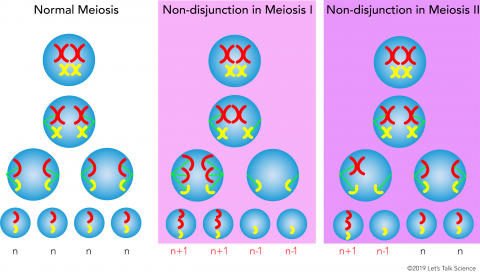
Why are some people born with too few or too many chromosomes?
If a sex cell that has suffered a nondisjunction event is combined with a sex cell from the opposite sex, the resulting zygote will have more or less than 46 chromosomes. This means that when that baby is born, it will have more or less than 46 chromosomes. This person will also have either too many or too few genes. Biologists call this aneuploidy.
Without 46 chromosomes, the human body will make the wrong number of proteins. Proteins play many roles. For example, they help build and repair tissues, like hair and nails. They also create and regulate hormones. Without the right number of proteins, the processes in your body may not work properly.
Did you know?
Almost 6% of all babies are born with some form of genetic disorder. Worldwide, that’s about 8 million babies every year.
What happens if you have too many chromosomes?
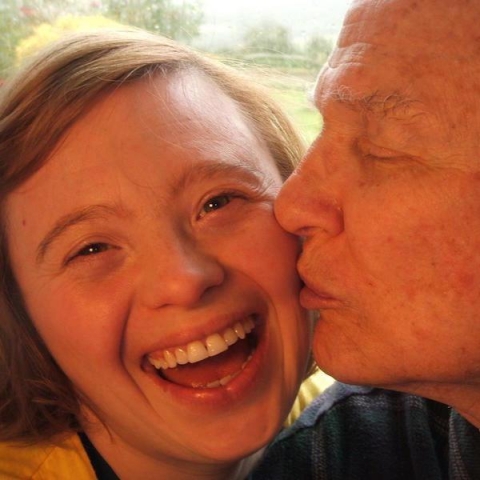
If one of the original cells had an extra chromosome, the person will have trisomy. This is a type of aneuploidy. People with trisomies have three copies of a particular chromosome (instead of two). This means these individuals have a total of 47 chromosomes (n+1).
Trisomies are named after the chromosome pair that gets the extra chromosome. Trisomy 21 is a fairly common aneuploidy that involves an extra chromosome 21. This is also called Down syndrome. It affects about one in every 750 babies born in Canada. Children with Trisomy 21 may experience delays when learning to crawl, walk and speak. As they get older, they may have trouble with reasoning and understanding.
Two other examples are Trisomy 13 (Patau syndrome) and Trisomy 18 (Edward’s syndrome). They can both cause serious brain, heart and spinal cord defects. Many babies born with these syndromes only live a few days.
What problems do extra X and Y chromosomes cause?
In a female fetus, an extra X chromosome causes Triple X syndrome. It is associated with learning disabilities and organ abnormalities.
In a male fetus, Klinefelter syndrome is the result of an extra X chromosome (XXY). Males with this condition have smaller testicles and are infertile.
Finally, males born with an extra Y chromosome (XYY) have Jacob’s syndrome. The symptoms include language difficulties, problems with sitting and walking, and behavioural-emotional issues. People with an extra Y chromosome may also have mild autism and weak muscle tone (hypotonia).
The human body is a complex machine and sometimes, it makes mistakes. By learning more about human genetics, we can better understand genetic disorders. This will help us find ways to help people who have them. Scientists are now looking for ways to edit DNA so they can reduce the effects of genetic disorders. This technique is called genome editing. You can make a difference in your community by volunteering to help people with disabilities.
Starting Points
- Do you know anyone with Down syndrome or any other aneuploidy?
- How might genome editing technology affect the incidence of aneuploidy in the world in the future? What ethical issues surrounding genome editing still need to be considered?
- Why might the topic of genetic disorders be difficult for people to discuss openly?
- How can society better serve people born with genetic disorders?
- What is a gamete? How many chromosomes are in a human gamete? How many chromosomes are in a human somatic cell (body cell)?
- What is the purpose of the process of meiosis?
- What is unique about chromosome 23 in humans?
- What determines the biological sex of a male or female human?
- What is aneuploidy? What is the cause of aneuploidy?
- What is trisomy? How are trisomies named? Provide at least two examples of genetic disorders that can occur as a result of a trisomy.
- Have you seen or heard any media that is about, or in support of, people with Down Syndrome? What messages were being conveyed? What role does this type of media play in society?
- This article and embedded video can be used to support teaching and learning of Biology, Health, Anatomy, and Genetics related to mitosis & meiosis, DNA structure and genetic disorders. Concepts introduced include DNA, deoxyribonucleic acid, nucleotides, genes, chromosomes, gametes, autosomes, x-chromosomes, y-chromosomes, haploid cells, cell division, mitosis, diploid cells, meiosis, meiosis I, spindles, aneuploidy, proteins, nondisjunction, zygote, trisomy, Trisomy 21, Down syndrome, genome editing, Klinefelter syndrome, Triple X syndrome, Jacob’s syndrome and hypotonia.
- Before reading this article, teachers could have students conduct a Vocabulary Preview learning strategy to engage their prior knowledge and introduce new terminology. Ready-to-use Vocabulary Preview reproducibles are available in [Google doc] and [PDF] formats.
- There is a good chance that one of your students has a family member or relative with a trisomy genetic disorder, like Down syndrome. This may present opportunities to openly discuss genetic disorders and relate it to real people and real situations. Good teacher supports are available through the Canadian Down Syndrome Society and their provincial affiliates, like this Canadian Down Syndrome Society Educator Package.
Connecting and Relating
- Do you know anyone with Down syndrome or any other aneuploidy?
Relating Science and Technology to Society and the Environment
- How might genome editing technology affect the incidence of aneuploidy in the world in the future? What ethical issues surrounding genome editing still need to be considered?
- Why might the topic of genetic disorders be difficult for people to discuss openly?
- How can society better serve people born with genetic disorders?
Exploring Concepts
- What is a gamete? How many chromosomes are in a human gamete? How many chromosomes are in a human somatic cell (body cell)?
- What is the purpose of the process of meiosis?
- What is unique about chromosome 23 in humans?
- What determines the biological sex of a male or female human?
- What is aneuploidy? What is the cause of aneuploidy?
- What is trisomy? How are trisomies named? Provide at least two examples of genetic disorders that can occur as a result of a trisomy.
Media Literacy
- Have you seen or heard any media that is about, or in support of, people with Down Syndrome? What messages were being conveyed? What role does this type of media play in society?
Teaching Suggestions
- This article and embedded video can be used to support teaching and learning of Biology, Health, Anatomy, and Genetics related to mitosis & meiosis, DNA structure and genetic disorders. Concepts introduced include DNA, deoxyribonucleic acid, nucleotides, genes, chromosomes, gametes, autosomes, x-chromosomes, y-chromosomes, haploid cells, cell division, mitosis, diploid cells, meiosis, meiosis I, spindles, aneuploidy, proteins, nondisjunction, zygote, trisomy, Trisomy 21, Down syndrome, genome editing, Klinefelter syndrome, Triple X syndrome, Jacob’s syndrome and hypotonia.
- Before reading this article, teachers could have students conduct a Vocabulary Preview learning strategy to engage their prior knowledge and introduce new terminology. Ready-to-use Vocabulary Preview reproducibles are available in [Google doc] and [PDF] formats.
- There is a good chance that one of your students has a family member or relative with a trisomy genetic disorder, like Down syndrome. This may present opportunities to openly discuss genetic disorders and relate it to real people and real situations. Good teacher supports are available through the Canadian Down Syndrome Society and their provincial affiliates, like this Canadian Down Syndrome Society Educator Package.
Learn more
Chromosome Numbers During Division: Demystified! (2015)
Video (5:46 min.) from the Amoeba Sisters explaining the process of mitosis and meiosis; includes basic mathematical reasoning and animations to explain the processes
Visualizing Nondisjunction (2013)
Video (1:34 min.) from Jack Lewis discussing chromosomal disorders that are a result of nondisjunction
Types of Chromosome Abnormalities (2019)
List of common chromosomal abnormalities and links to more information from the University of Rochester Medical Center.
References
Brennan, D. (Ed.). (2019, May 5). What Is Down syndrome? WebMD.
Centers for Disease Control and Prevention. (2018, April 30). Data & statistics on birth defects.
Genetic Alliance. (2009, July 8). Understanding genetics: A New York, mid-Atlantic guide for patients and health professionals.
Hamilton, N. P. (2018, November). Overview of chromosome and gene disorders. Merck Manual.
Khan Academy. (2015). Chromosomes.
Khan Academy. (2015). Aneuploidy & chromosomal rearrangements.
Learn Genetics. (n.d.). Extra or missing chromosomes.
National Down Syndrome Society. (n.d.). What is Down syndrome?
The World Health Organization. (n.d.). Gender and genetics.